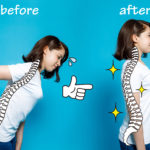Health Blog
Patients with a particular type of knee pain are more overweight

Association between the two has not been clearly evaluated
Knee osteoarthritis (OA) is a condition in which cartilage that normally protects the knee gradually wears down over the course of time. It is one of the leading causes of pain and disability throughout the world, affecting about 10% of men and 13% of women over the age of 60 in the U.S. The patellofemoral joint connects the kneecap (patella) with the upper leg bone (femur), and symptoms of knee OA frequently occur in this area. This joint also plays a critical role in the function of the knee, as it allows individuals to complete many daily activities like squatting and climbing or descending stairs. Due to its role, though, the patellofemoral joint may be negatively affected by forces that are too strong, such as excessive weight. Overweight or obese individuals with a high body mass index (BMI) put lots of stress on their knees, which may increase the risk for pain in the patellofemoral joint and knee OA, but this association has not yet been clearly evaluated. For this reason, a powerful pairing of studies called a systematic review and meta-analysis were conducted to determine if high BMI is a risk factor for patellofemoral pain and knee OA.
52 studies are accepted into the review
Researchers performed a search of six major medical databases for studies that included information on the associated between BMI and patellofemoral pain or knee OA. This search led to a total of 7,894 studies being evaluated, and from these, 52 met the necessary criteria and were accepted into the review. The findings of each of these studies were then evaluated and compared to one another, and the quality was ranked to determine how reliable their data was. Studies were given a rating from 1 (strong evidence) to 5 (conflicting evidence).
Adults—but not adolescents—with patellofemoral pain and knee OA have a higher BMI
The results of this systematic review and meta-analysis showed that the BMI of adults with patellofemoral pain and knee OA was generally higher than the BMI of healthy individuals without knee pain that they were compared to. When it came to adolescents with patellofemoral pain, however, the same type of association was not found. As for why this association was found it, adults, it likely has to do with the fact that individuals with a higher BMI generally reduce their activity levels due to the persistent pain that is brought on by their condition. In turn, reduced activity levels can actually lead to more weight gain and more stress on the knees, which can create a vicious cycle that makes their condition even worse. This study, therefore, shows how important it is for those with a high BMI to reduce their weight, as doing so may also lower their chances of developing knee pain due to the involvement of the kneecap. Physical therapists can help in their pursuit by prescribing specific exercises and offering advice on how to increase physical activity levels, and those with patellofemoral pain are encouraged to seek out their services for additional guidance.
-As reported in the May '17 issue of the British Journal of Sports Medicine
May 18, 2018
Back to Health BlogHEALTH BLOG
- A Personalized Physical Therapy Program Can Assist with Whiplash
- Why Older Adults Should Incorporate an Exercise Program
- After an Achilles Injury, Physical Therapists Can Help with Recovery
- AI Can Answer Questions But It’s Best to See a Physical Therapist
- Physical Therapy Can Help With Symptoms of Wryneck
- Reduce the Risk of Pickleball Fractures By Taking Proper Precautions
- Physical Activity May Slow the Progression of Parkinson's Disease
- Too Much Salt in Your Diet? Learn the Dangers of High Sodium Intake
- Suffer From Lower Back Pain? Might Be Time to Take A Break
- The Road to Recovery: Preventing Re-Injury After ACL Surgery
RECENT ARTICLES

- 11 Possible Reasons Your Back HurtsJune 22, 2020

- What Conditions Can a Chiropractor Treat?May 25, 2020

- A Simple Guide to Better PostureApril 30, 2020

- Is Acupuncture Right for Me When I’m Afraid of Needles?March 30, 2020

- Stretching Done Right — How and When to StretchFebruary 26, 2020

